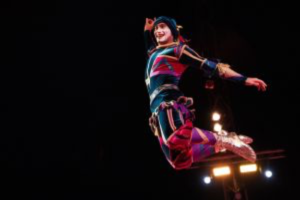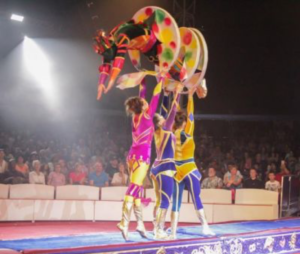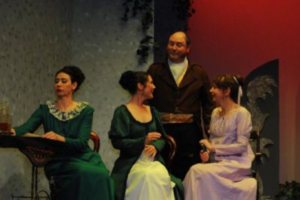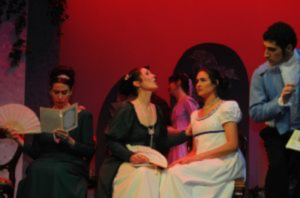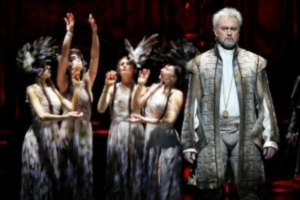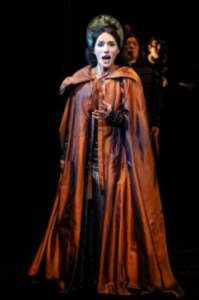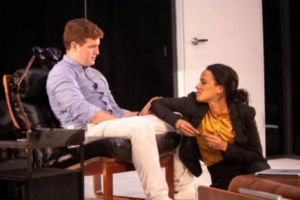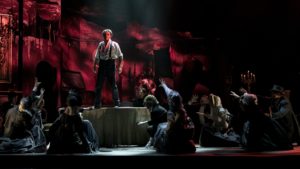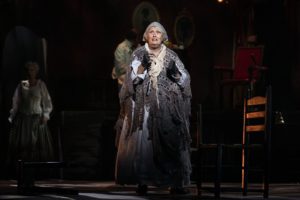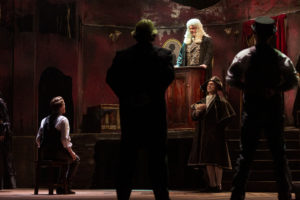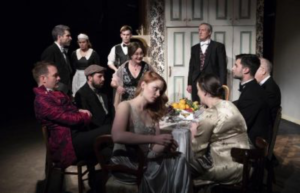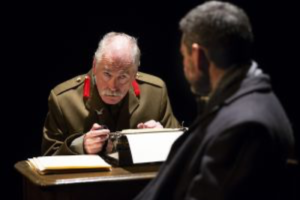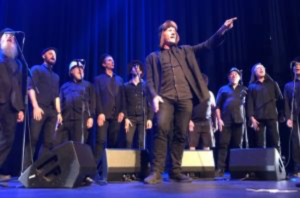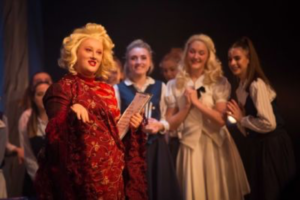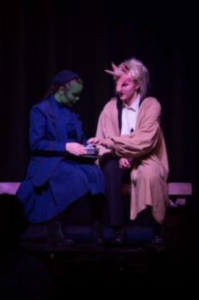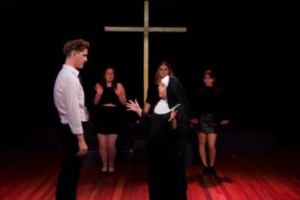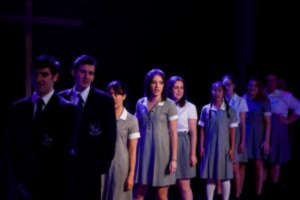Bonnie Lythgoe Productions. State Theatre, Sydney. July 12 – 21, 201.
Reviewed : 12 July, 2019
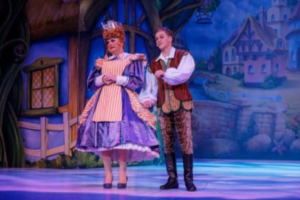
Bonnie Lythgoe Productions warms up the winter school holidays with yet another fairy tale pantomime, this year with the added ‘oomph’ of 3D projections of a virtual giant and the creepy creatures of his lair. This all-singing, all-dancing – and all-groaning jokes – production sticks to the plot a little more than did Sleeping Beauty last year.
ABC Kids’ Jimmy Giggle (Jimmy Rees) is a welcome addition as a ‘crowd-pleaser’. Playing Simon Trott, Rees uses his KA (Kid Appeal) to rouse the audience with song, dance, some limber ‘flossing’ and some embarrassing audience participation.
Surrounded by a star curtain, framed by a twisting beanstalk and played in front of a series of flies, the production rocks along at times, and drags a bit at others – see “all groaning jokes” above, and the love songs that, whilst showcasing the talents of the cast, tend to lose the kids a little. Nevertheless, they are an integral part of the ‘panto scenario’ and Jack and the Beanstalk has them all!
There’s the sneering villain, Flesh Creep, played with smug simpering by Luke Joslyn as he steals both the heroine and Jack’s cow, Daisy Buttercup. Dressed in slinky tails, Joslyn slithers, smirks and successfully stirs the audience to raucous boo-ing with his menacing threats.
And, of course, there’s the indispensable Dame, in this case Jack’s mother, Dame Dotty Trot, played by British TV and panto aficionado Malcom Lord. Lord wears his many flamboyant frocks and aprons with the colourful aplomb and proficiency of his 27 years of panto experience.
Peter Rowsthorn, in shimmering gold tails and boots, brings his comic timing to the role of King Crumble, who beset by the taxing demands of the giant – and urged on by his red-velvet-clad Lord Chancellor (Richard Reid) – promises the hand of his daughter, Princess Jill, played by Anastasia Feneri, to any man who can rid the kingdom of the avaricious ogre.
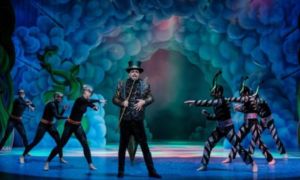
That ‘man’ is young Jack – played by Lachlan Dearing – who, with the help of Fairy Crystal’s (Lucy Durack) magic wand and enchanting voice and the support of his friends, climbs the beanstalk, braves the 3D monsters, rescues the princess and slays the virtual giant! Dearing has a bright stage presence and plays the reluctant hero with lithe ease.
The set, effects and vibrant costumes give this production the picture-book colour and charm of ‘once upon a time’ and, with the ‘believe in yourself’ theme, make it a happy, live theatre alternative to the animated toys and violent superheroes of current holiday cinema offerings.
Also published in Stage Whispers Magazine
